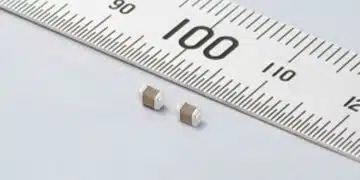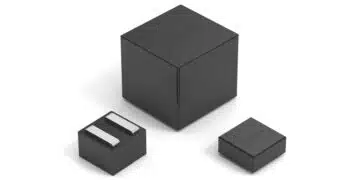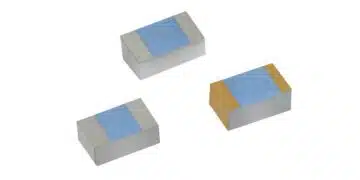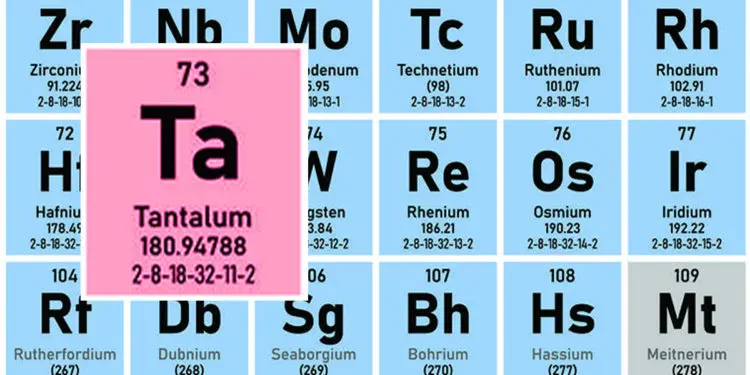While the world slowly returns to some form of post-covid normality, the tantalum industry is transitioning to an entirely new normality, one where reliability, stability and transparency are replacing the traditional volatility, uncertainty and opacity, which is likely to stimulate long-term growth in demand.
Electronic capacitors remain the largest single market for tantalum, despite having lost share over the past two decades to alternatives based on aluminium and ceramics. This erosion was the result of severe volatility in tantalum prices, justified worries about the availability of supply, and mounting concern over ethical sourcing. It would not be unreasonable to describe tantalum capacitors as the capacitors of last resort, used only when necessary. In addition, innovation enabled the production of smaller tantalum capacitors, reducing the tantalum content of the average capacitor.
Today, however, while miniaturisation is set to continue, tantalum is poised to regain market share owing to changes in capacitor de-rating stemming in part from hard work by the industry, and in part from the performance advantages brought by the use of conductive polymer cathodes.
What’s more, 5G systems hardware and electric vehicles both constitute markets where tantalum’s durability, robustness and reliability are likely to expand the use of tantalum capacitors. All in all, we expect tantalum metal demand in capacitors to increase somewhat faster than global GDP growth over the next several years at least.
Process improvements
Semiconductors are another electronics market with growth prospects higher than those for global GDP. Here tantalum is an essential component of computer chips – tantalum serves as an insulating layer for the copper wiring structure (the interconnect) that links together the transistors inside the chip. Computer chips would not work without tantalum. The same sputtering deposition technology continues to be used thanks to two decades of continuous process improvements. While in the medium-term copper is likely to be phased out as wiring diameters approach closer to 1 nanometer, the increase in interconnect layers and the extension of copper-tantalum technology to chip packaging imply sustained above-GDP growth for tantalum in this critical application.
The situation is a little less clear in the telecommunications market. Alongside tantalum capacitors, lithium tantalate (LTA) provides frequency-filtering capability to RF antennas. LTA is an electroactive crystal and can be used to tune antennas to transmit and receive only in specified frequency ranges. However, LTA is limited to network frequencies below about 2.5GHz, whereas 5G networks typically operate at or above 3GHz (with wide global variation).
Nevertheless, 5G handsets also need 4G connectivity (5G is range-limited and likely will remain an urban network service for many years) so LTA will still see ubiquitous usage. And in the still-fluid RF filter market for higher-frequency 5G, tantalum oxide may find a role in the filter devices of the future.
Clearly, 5G will have an impact on demand growth, but for LTA we expect growth to remain close to global GDP growth.
Tantalum is a critical metal for high-temperature nickel superalloys, especially those deployed in the hot zones of jet engines. Tantalum frequently makes up about 5% by weight in these alloys and is added to provide stability to turbine blades at high temperatures. Needless to say, tantalum demand was severely curtailed as air travel almost halted in 2020 under covid restrictions. Demand remained depressed in the first part of 2021, but in the second half of the year we have seen sustained recovery to a run-rate above 50% of pre-pandemic demand, with industry expecting further firm recovery in 2022. Our view is that demand growth will return to pre-pandemic rates, somewhat above global GDP, although significant restrictions on air travel could come out of climate change policies.
Elsewhere on the demand side, the supply chain havoc caused by Covid together with global trade and security tensions (not to mention the Suez Canal debacle) mean that industry supply chains are certain to reshape, with more production being localised or re-shored. Tantalum is used in many harsh chemical environments thanks to its excellent resistance to mineral acids and high temperatures, thus re-shoring bodes well for tantalum demand growth in chemical processing equipment. We see demand growth here at close to or slightly above global GDP growth.
Production hit
Turning to the supply side, during 2020 raw material prices slipped to their lowest levels in a decade as covid hit production of goods containing tantalum. The trend reversed in 2021, with spot prices climbing 50% from their January lows by mid-year. Prices have slipped back a little since then, but for now appear steady at a level well above those of late 2020.
Production has held steady in central Africa, currently the world’s most significant producing region. Unfortunately, this year’s UN report on the trade in conflict tantalum recorded continuing dubious and concerning practices, including a substantial apparent volume of smuggling of tantalum from the DRC into Rwanda and re-labelling as Rwandese ore. This is a situation that will not go unnoticed by major consumers and could potentially create pressure on supply from the region until compliance and traceability improve.
Even before Covid, the lithium industry was in the doldrums as battery makers worked through the glut of lithium procured through 2018. Since Australian hard-rock lithium mines are also a source of tantalum by-product, tantalum output in Australia was also hit hard. Now, however, the lithium industry is enjoying a resurgence. The recently announced restart of the Wodgina mine in Australia in 2022 is emblematic of the turnaround.
Expansions in lithium output will bring large increases in tantalum mineral production. Outside of Australia, we project lithium-driven tantalum supply to expand considerably in Brazil and Mozambique within the next few years. Current regional supply shares, at approximately 60% for Africa as a whole, 25% for South America, and 15% for the rest of the world (mainly Australia and China) are going to change substantially.
Lithium’s growth will bring something else to the tantalum industry: Stability. Unless something dramatic happens, vehicle electrification is here to stay and so is lithium. Tantalum supply will increasingly behave as a stable, predictable thing, ending the profound volatility of the past. Predictable supply from a stable jurisdiction is going to fuel further growth in tantalum demand as the perceived supply, ESG reputational, and price risks inherent in the metal diminish over time.
Thanks to lithium-ion battery demand, tantalum supply is poised to grow strongly over the coming years, just as demand also looks set to climb on a sustained basis. Our view is that on balance supply is likely to outgrow demand, although the impact of a stable and secure supply on future demand should not be overlooked and could potentially spur faster growth in demand.

































